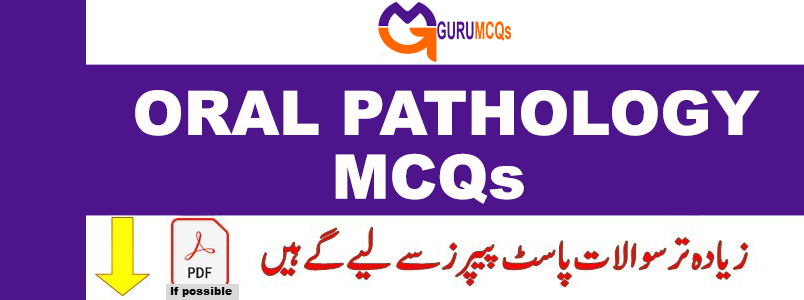
The mouth, being a vital organ with diverse functions, is subject to various diseases falling under the domain of oral pathology. This field encompasses the study of diseases affecting the mouth, jaws, and associated structures like salivary glands, facial muscles, temporomandibular joints, and perioral skin. Oral pathology, as a specialized discipline, focuses on diagnosing and investigating the causes and effects of diseases impacting the oral and maxillofacial region. For a thorough and objective assessment of students’ critical thinking abilities, multiple-choice questions (MCQs) serve as the preferred format. Gurumcqs.com offers a comprehensive collection of 2000+ oral pathology MCQs with answers and detailed explanations. These MCQs are carefully selected from reputable and trusted reference books on oral pathology. They prove beneficial for interview preparation, entrance examinations, competitive exams, and certifications, catering to individuals with varying levels of experience, including both seasoned professionals and newcomers. Additionally, you can explore MCQs on Oral Anatomy on this platform.
111. Scleroderma involves:__________?
A. Tightening of oral mucosa and periodontal involvement
B. Multiple palmar keratosis
C. Raynaud’s phenomenon
D. All of the above
112. Erythema multiformae is:___________?
A. An acute self limiting disease, of skin and oral mucous membrane
B. painless vesicular self limiting disease
C. A viral disease
D. Bacterial infection
113. Darier’s disease is associated with:____________?
A. Pernicious anaemia
B. Rickets with involvement of teeth and bones
C. Vitamin A deficiency and involvement of oral epithelium and skin
D. Diffuse tender ulceration on the palate predominantly
114. Koebner’s phenomenon is seen with_____________?
A. Erythema multiforme
B. Pemphigoid
C. Psoriasis
D. Impetigo
115. Tzancks smear test is used in the diagnosis of___________?
A. pemphigus
B. ANUG
C. Apthous disease
D. Lichen planus
116. Unusual extensibility of the tongue is a characteristic feature of:__________?
A. Epidermolysis bullose
B. Syphilis
C. Darier-White disease
D. Ehlers-Danlos syndrome
117. Which of the following is not a type of lichen planus?
A. Atrophic
B. Hypertrophic
C. Verrucous
D. Erosive
118. A fluid filled elevated lesion of skin is called___________?
A. Bulla
B. Macule
C. Papule
D. Nodule
119. Grinspan syndrome is associated with:_________?
A. Hypertension, diabetes, lichen planus
B. Oral, ocular, genital lesions
C. Hypertension with oral lesions
D. lemphigus, CHF, diabetes
120. In lichen planus the basal cells which are shrunken with an eosinophilic cytoplasm and with a pyknotic and fragmented nuclei are called__________?
A. Tzanck cells
B. Civatte bodies
C. Donovan bodies
D. Rushton bodies

Pingback: Oral Histology MCQs Questions for Test and Exam Preparation | GURU MCQS
I was recommended this website by my cousin. I’m not sure whether this post is written by him as nobody else
know suc detailed about my difficulty. You are wonderful!
Thanks! https://www.waste-ndc.pro/community/profile/tressa79906983/
I was recommended tthis webnsite by my cousin. I’m not suure whether this post is written by
him as nobody else know such detailed about myy difficulty.
You are wonderful! Thanks! https://www.waste-ndc.pro/community/profile/tressa79906983/